The Tour de France isn’t just a bike race. It’s the third biggest sporting event on the planet—right after the Olympics and World Cup soccer.
Last July, I joined the throngs of cycling fans who crisscross Europe just to catch this wild spectacle up close. And honestly, what I found was so much more than just a bunch of riders pedaling across France.
Standing only meters from the world’s strongest cyclists as they clawed their way up brutal mountain climbs—wow, it’s nothing like watching on TV. The roar of thousands of fans, the rumble of support vehicles, and the grit on every rider’s face combined into something no broadcast can really show you.
The Tour’s three-week circus pulls in huge crowds and transforms sleepy French mountains into wild outdoor festivals. I got swept up in the pre-race parties, rode alongside pros after stages, and finally understood why Tour de France fever is so contagious.
If you’re a cycling fan, you really have to see it for yourself at least once.
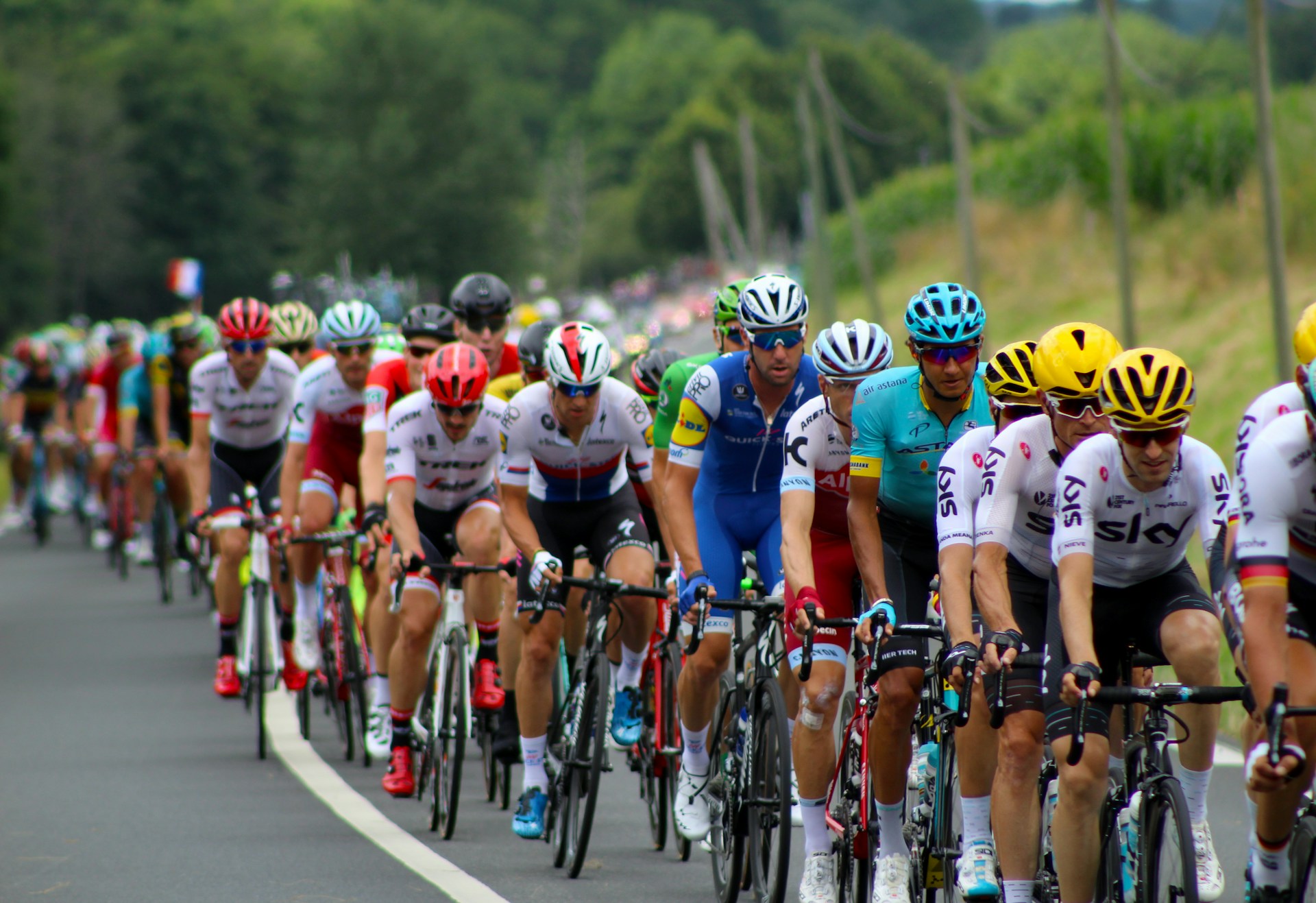
Experiencing Tour de France Fever Up Close
Nothing quite prepares you for the raw energy that pulses around the Tour. The crowds, the noise, the pure passion—it’s a vibe unlike any other sporting event I’ve ever been to.
My Personal Journey to the Tour
I started planning my France trip three months out. Good viewing spots don’t come easy; you have to get there early and stake your claim.
First up: picking a stage. I went for Stage 12 in the Alps because mountain stages are always the most dramatic. Climbs slow the riders, so you actually see the action.
I grabbed a hotel in Bourg-d’Oisans, about 20 kilometers from Alpe d’Huez. The place was packed—every café and bar buzzed with debates over race tactics and favorite riders.
On race day, I rolled out of bed at 5 AM to grab a spot. The best areas fill up hours before the peloton even shows up. Water, snacks, folding chair—I came ready for the long wait.

The Electrifying Atmosphere
Tour fever hits you the second you see the first fans gathering. People literally camp overnight on the legendary climbs like Alpe d’Huez just to claim front-row views.
Fans create an incredible wall of sound as the riders get close. Cowbells ring out, air horns blare, and voices shout in every language—French, English, Dutch, you name it.
The excitement ramps up all morning. First, the publicity caravan rolls through tossing freebies. Then police motorcycles buzz by and everyone knows the race is almost here.
When the breakaway group finally appears, the crowd surges forward for photos and videos. The main pack climbs past and the noise just explodes.
Painted roads and wild costumes are everywhere. Some fans dress as devils, superheroes, or national flags. Others paint huge messages right onto the tarmac.

Iconic Moments I Witnessed
I saw Tadej Pogačar launch a blistering attack on the steepest part of the climb. He dropped everyone in seconds—the crowd just lost it.
The yellow jersey battle played out right in front of us. Two riders, side by side, neither willing to crack. Their faces showed nothing but pain and stubborn willpower.
Everything happened so fast. Months of planning, hours of waiting, and then—maybe 30 seconds of pure, heart-pounding action. But those few seconds? Absolutely magical.
After the last rider passed, the crowd stuck around. People compared photos, swapped stories—everyone felt like they’d just been part of something special.
I also caught the human side of the sport. Some riders cramped up and nearly stopped on the steepest bits. A few had mechanicals that ended their day on the spot.
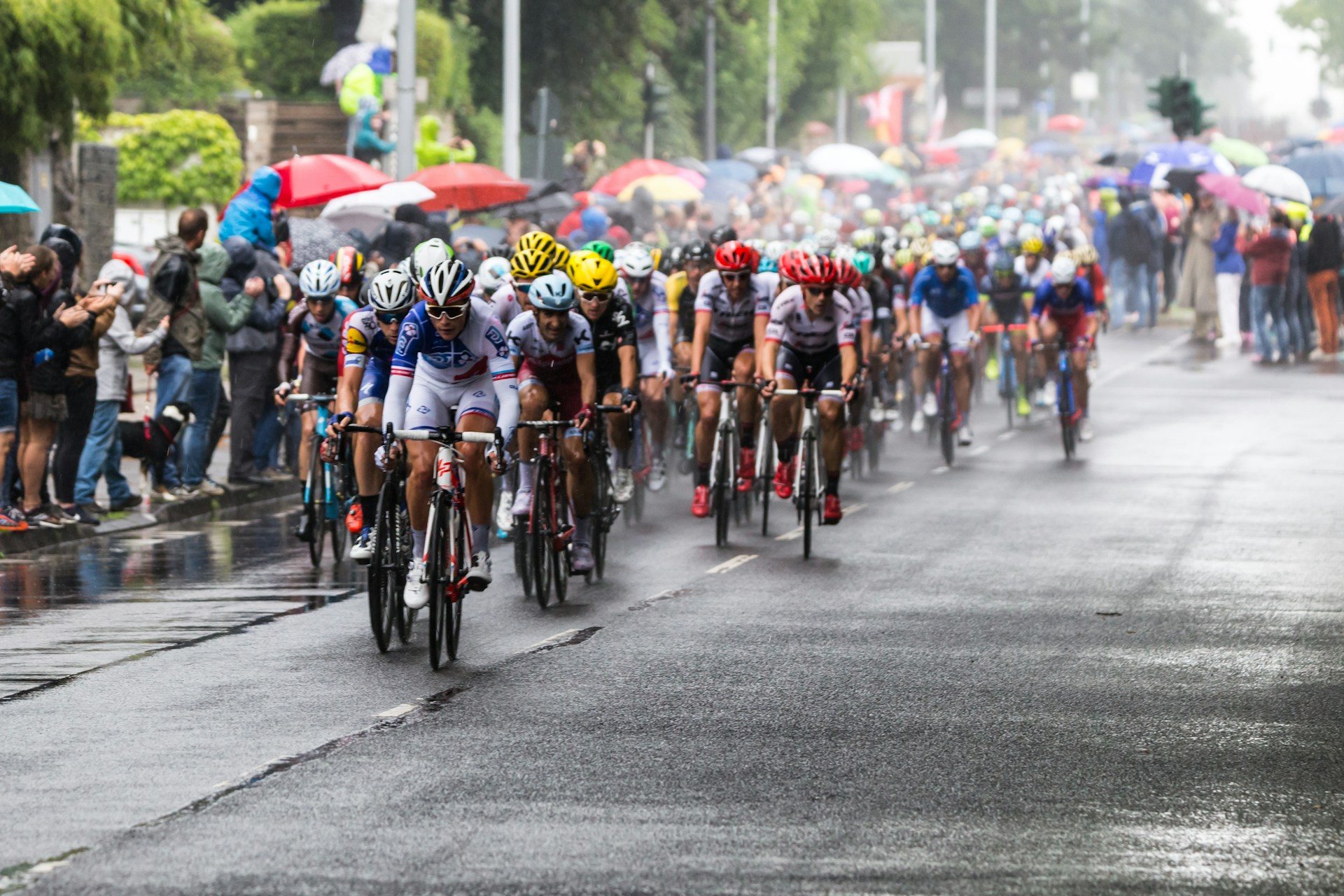
The Unmatched Spectacle of the Race
The Tour de France blends raw athletic drama with fan excitement in a way nothing else does. I watched split-second decisions flip entire stages. The energy from the crowds turned sleepy French villages into roaring stadiums.
Unpredictable Drama on the Road
Every stage brought surprises. One minute, a rider cruised in the pack. The next, he crashed out after hitting a pothole.
I watched weeks of preparation end in a split second. A yellow jersey contender hit the deck, medical teams rushed in, and just like that—dreams shattered.
Weather made things even crazier. Rain turned descents into slippery chaos. I watched racers take corners at 40 mph on wet roads, their bikes skidding just inches from disaster.
Tactics kept me guessing. Teams worked together for hours, then suddenly attacked each other in the final kilometers. One racer slowed for his teammate, then launched his own sprint minutes later.
Mechanical issues struck out of nowhere. A snapped chain or flat tire could cost someone ten minutes and ruin their Tour.

Fan Culture and Roadside Energy
The fans brought the party. They camped for days on famous climbs just to get a 30-second glimpse of the peloton.
People painted messages on the roads in every language. I saw “Allez Pogacar!” stretched across the width of a mountain pass in giant yellow letters.
The costumes? Next level:
- Devils with red pitchforks
- Giant foam hands
- Superheroes everywhere
- Flags draped as capes
Cowbells clanged so loud on the climbs that I could barely hear my own thoughts. The sound bounced off the mountains, driving the racers forward.
Fans sprinted alongside riders up the steep bits, screaming encouragement in every language under the sun.
Race day turned into a giant picnic. Families grilled sausages and set up camp chairs all along the route.
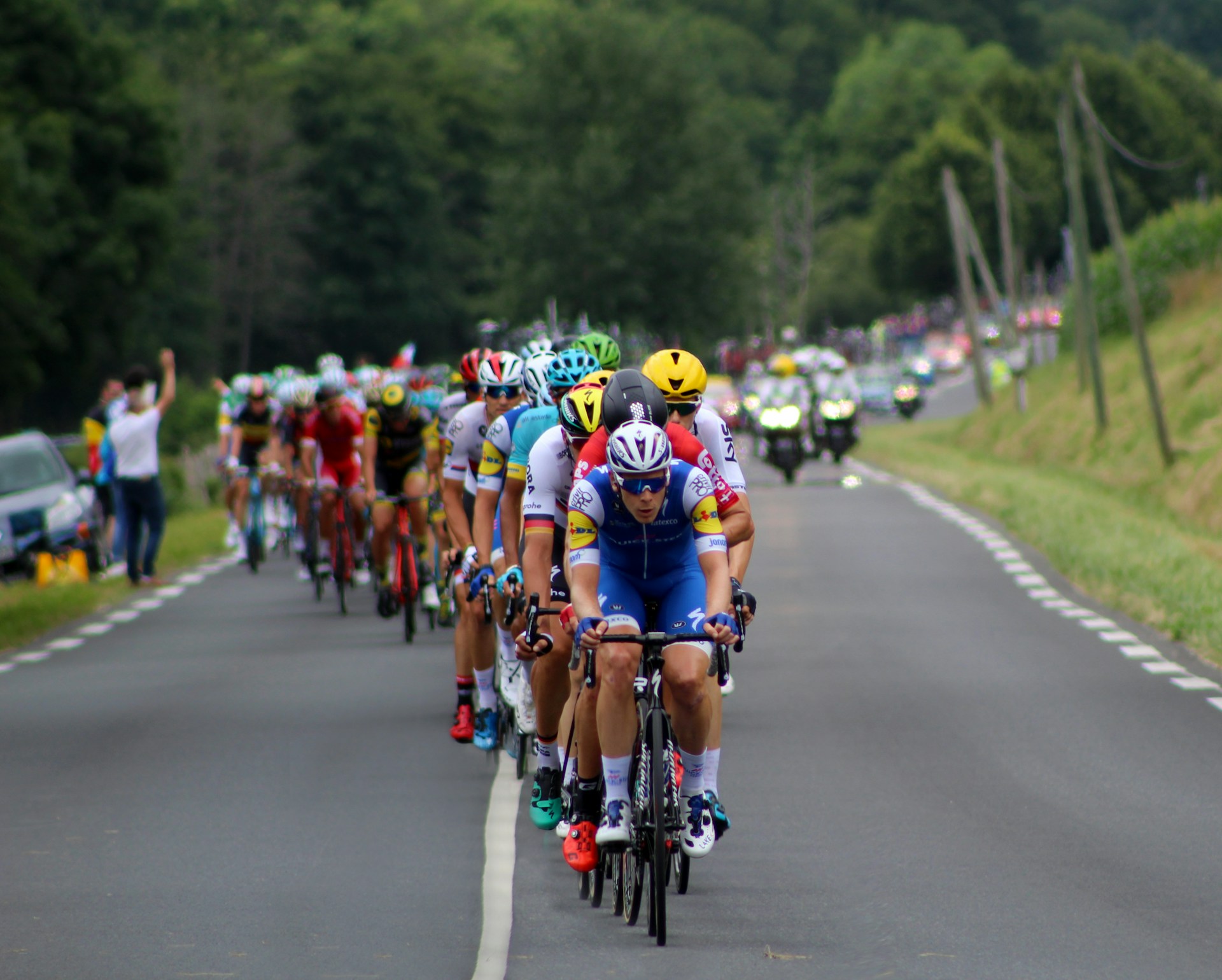
Behind the Scenes: What Most Don’t See
The sheer scale behind the scenes blew my mind. Over 4,500 people hustled to keep each stage running smoothly.
Race caravan logistics included:
- 500+ vehicles in tight formation
- Mobile kitchens feeding the masses
- Portable TV studios broadcasting live
- Medical helicopters circling overhead
I watched mechanics rebuild bikes in under two minutes during feed zones. Their hands moved so fast I couldn’t even follow.
Team directors drove right behind their riders, barking instructions through radios while weaving through narrow, fan-packed roads.
Camera motorcycles darted through the peloton, grabbing insane close-up shots. Helicopters coordinated with ground crews to catch every attack and crash.
Setup crews worked all night to build finish lines. By dawn, they’d turned empty fields into mini stadiums.

Getting to Know the Racers
The 2025 Tour de France brought together 184 riders from 23 teams, each with a story worth telling. There were battle-hardened champions and hungry newcomers, all fighting for a spot in cycling history.
Profiles of Cycling Legends
Tadej Pogačar had everyone’s attention. The Slovenian star already owns two Tour wins, and his climbing attacks are just jaw-dropping.
Jonas Vingegaard from Denmark stood out as Pogačar’s main rival. He’s won the 2022 and 2023 Tours, but his steady, calm style couldn’t be more different from Pogačar’s fireworks.
Primož Roglič brought years of experience to the table. The Slovenian veteran stays cool under pressure, and his time trial skills make him a threat on the right stages.
| Legend | Country | Tour Wins | Key Strength |
|---|---|---|---|
| Tadej Pogačar | Slovenia | 2 | Climbing |
| Jonas Vingegaard | Denmark | 2 | Consistency |
| Primož Roglič | Slovenia | 0 | Time Trials |
These guys set the tone for the race. Their moves force every other team to react.
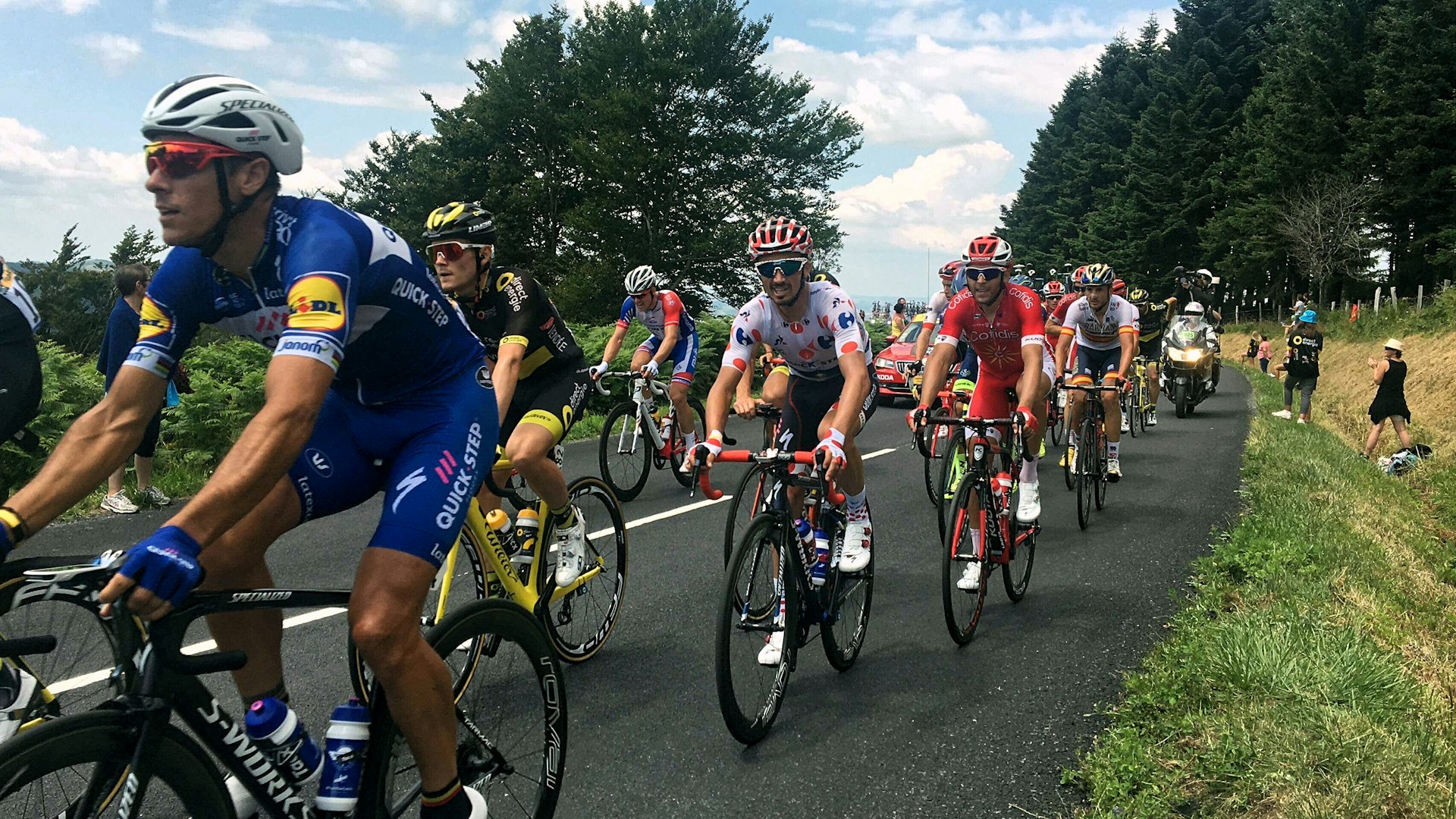
Spotlight on Rising Stars
Young riders shook things up this year. Remco Evenepoel from Belgium showed off his all-terrain talent at just 25. I kept noticing how he handled every kind of stage with ease.
Egan Bernal fought his way back after a brutal training crash. The Colombian climber took the 2019 Tour at 22, and watching his comeback was honestly inspiring.
A handful of neo-pros made their Tour debuts. These rookies faced the biggest challenge of their careers. The jump from amateur racing to the Tour is no joke.
Veteran teammates looked out for the newcomers. I saw them share bottles and offer tactical advice mid-stage. That mentorship is the only way some of these guys survive three brutal weeks.
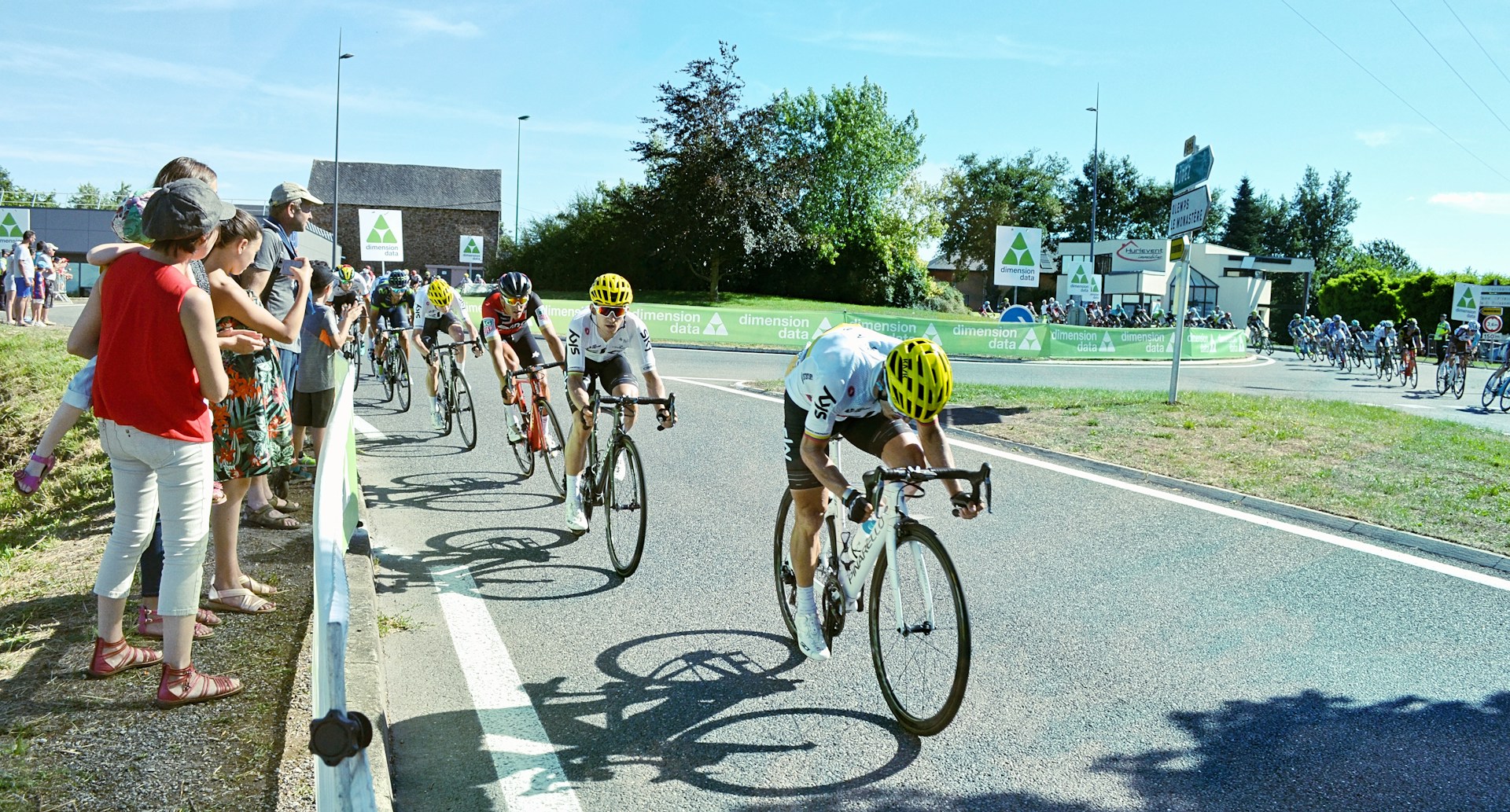
Unique Stories from the Peloton
Every rider rides for a reason. Some dedicate their efforts to lost teammates or family. Others race for their hometown pride.
Mark Cavendish kept chasing stage win records, even as one of the oldest sprinters in the peloton. His longevity and grit teach the younger sprinters a thing or two about survival.
Several riders pushed through serious injuries just to compete. Their determination reminded me that cycling is as mental as it is physical.
Each team fields eight carefully chosen riders. Domestiques do the grunt work, sacrificing their own results to help team leaders. These support riders often have the most fascinating stories—if you dig a little.

Global Appeal and Language of the Tour
The Tour de France unites cycling fans from every corner of the globe. It’s a rolling celebration that breaks down language barriers and brings people together.
This spectacle winds through France and sometimes dips into neighboring countries, showing off a mix of languages and cultures.
How the Race Unites Fans Worldwide
I watched the Tour create instant bonds between strangers from all over. Fans from Germany, Belgium, the Netherlands, and way beyond flocked to France just for a glimpse of their heroes.
The race draws 22 international teams, each packed with riders from different countries. Every stage feels like a mini world championship.
TV coverage beams the action to millions of viewers across continents. It’s wild to think the Tour ranks just behind the Olympics and World Cup soccer in global reach.
What brings everyone together?
- Shared excitement, no matter where you’re from
- The universal language of cycling
- Mutual respect for athletic grit
- Friendships and memories formed along the route
Social media keeps the global party going. Fans swap photos, celebrate wins, and debate tactics in real time, no matter the time zone.
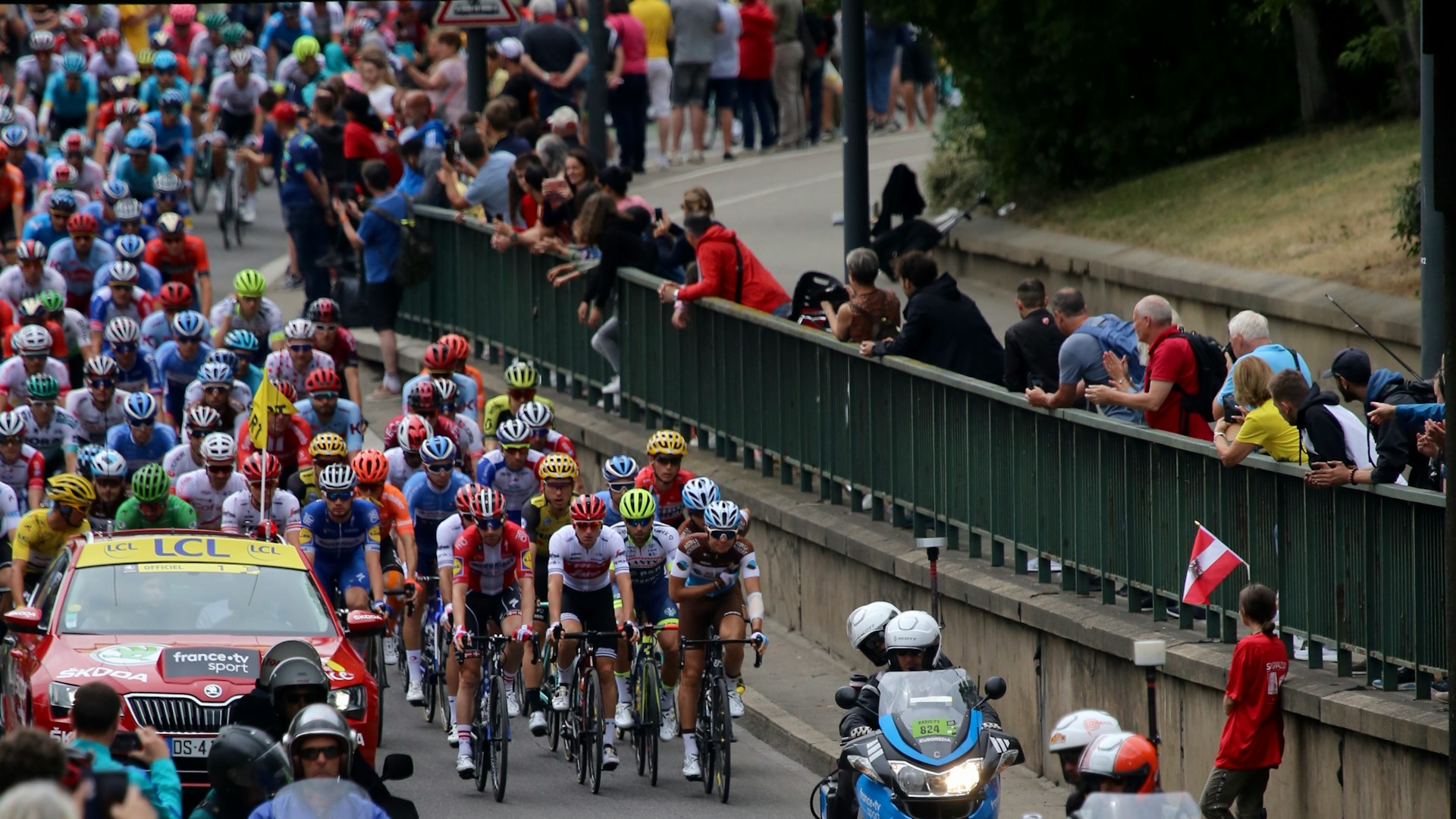
The Multilingual Experience
French is the main language of the Tour, but I heard a dozen others in the crowd. International broadcasters cover the race in their own tongues for fans back home.
Some French cycling terms I picked up:
- Le peloton – the main group of riders
- L’étape – each stage
- Maillot jaune – the yellow jersey
- Hors catégorie – the toughest climbs
Officials interview riders in multiple languages. Riders often switch between French, English, and their mother tongue, depending on the media.
Spectators wave signs in their own language and shout encouragement in whatever French they can manage. It’s a noisy, colorful mix.
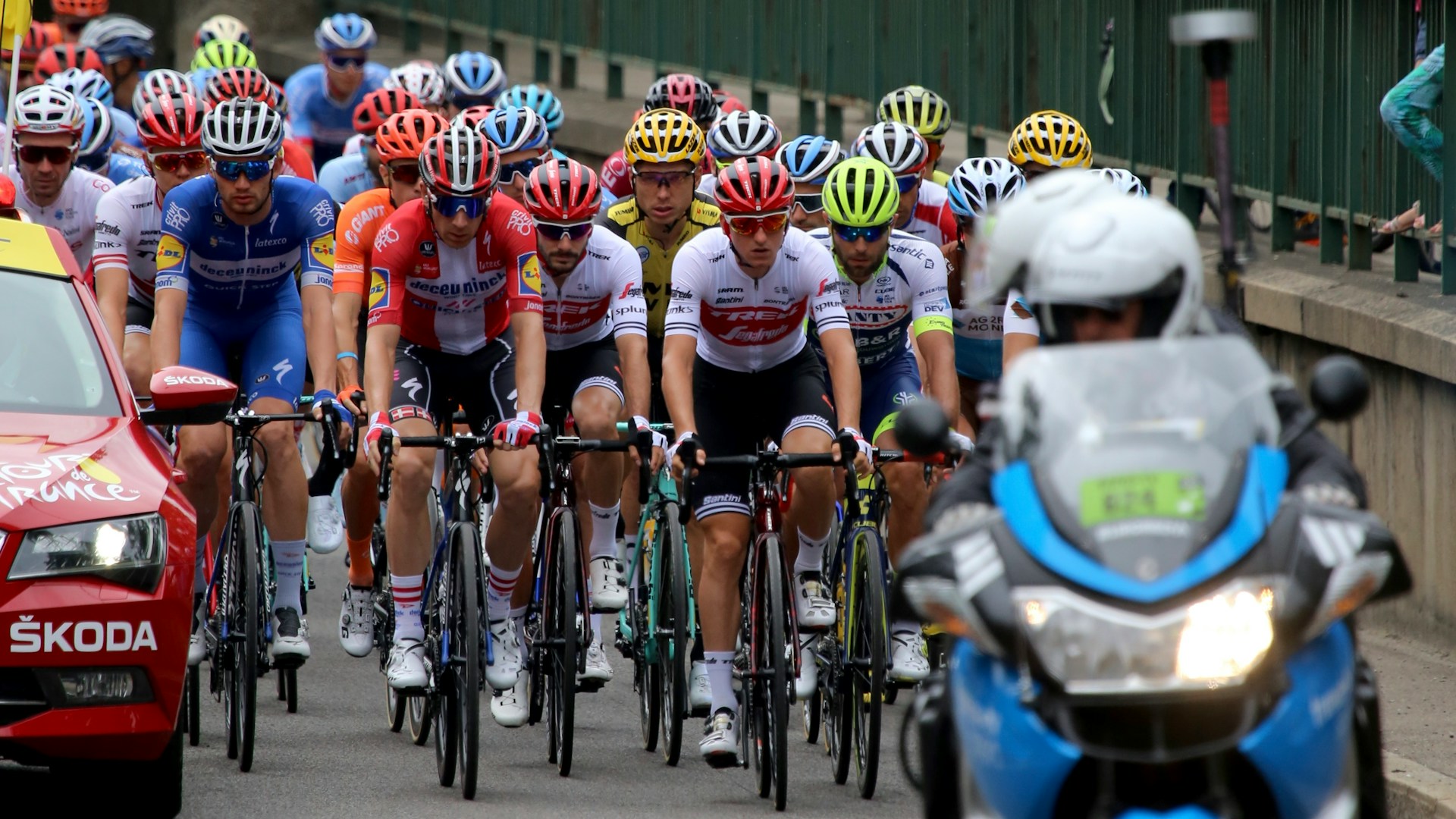
Cultural Highlights Along the Route
The Tour is a moving showcase of France’s diverse regions, and sometimes it even crosses into neighboring countries. Each place puts its own spin on the race.
I noticed huge differences as the race rolled on. Brittany brought Celtic flair, while the Alps felt almost Swiss or Italian.
Food is a big part of the fun. Spectators share regional treats. I tried everything from Breton crepes to Alpine cheeses—highly recommend sampling as you go.
The scenery changes constantly. One day you’re watching in front of a medieval castle, the next you’re perched above a modern city or tucked in a mountain village.
Cultural gems I loved:
- Local music and folk dancing
- Village festivals timed with the race
- Traditional costumes everywhere
- Historic landmarks woven into stage routes
The Tour celebrates Europe’s diversity but stays unmistakably French. That mix makes it so much more than just a bike race.
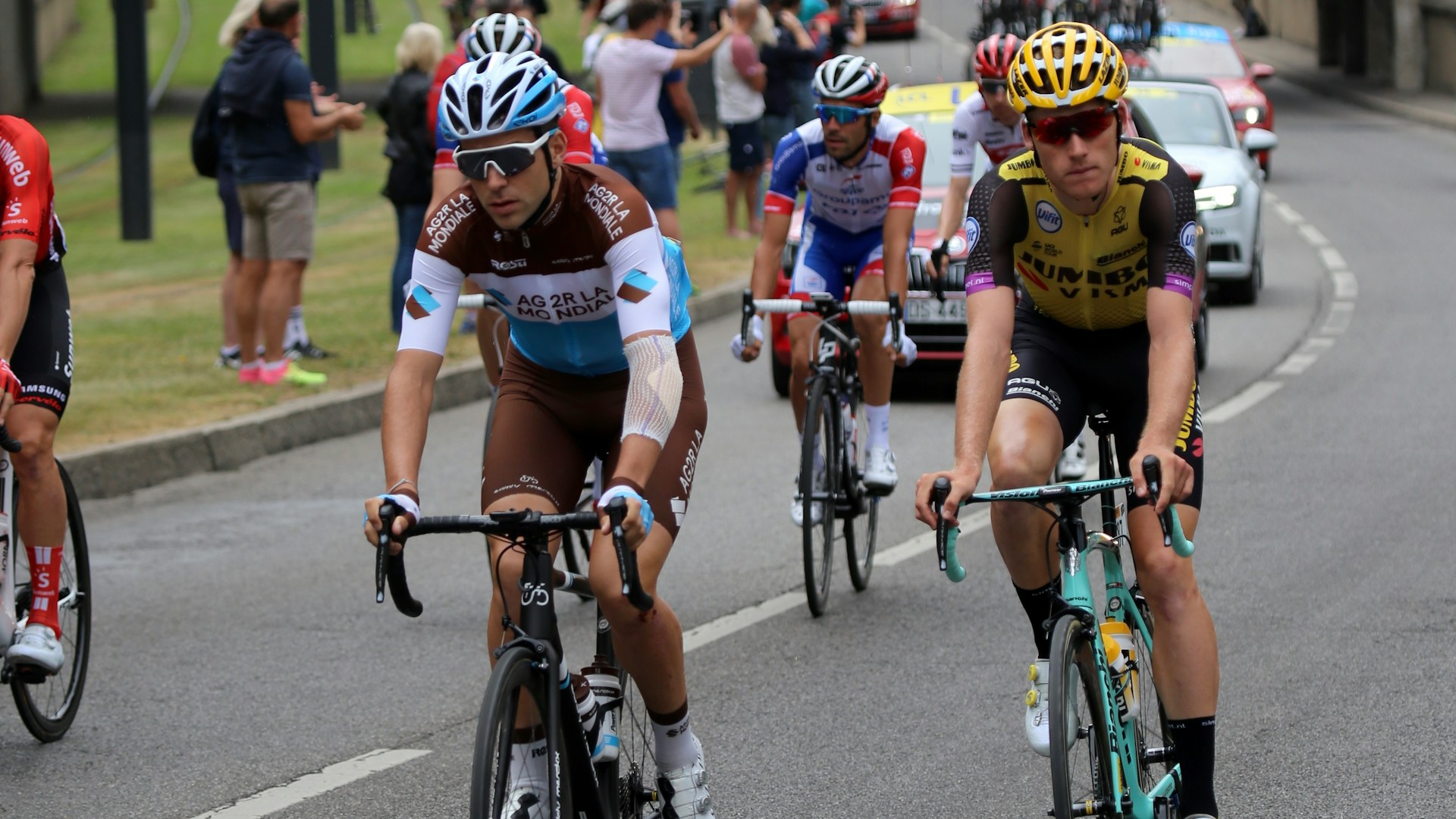
Tips for Future Spectators
If you want to catch Tour fever without the chaos, planning ahead is everything. Book early and pack for a long day outdoors—you’ll thank yourself later.
Planning Your Visit in July
Book your accommodation as soon as the route drops in October. Trust me, hotels in the start and finish towns vanish almost instantly—teams and media always seem to beat everyone to the punch.
If you want a real shot at a decent place, stay 15-20 kilometers away from the popular zones. I learned that the hard way, ending up 50 kilometers from Alpe d’Huez in Grenoble because I hesitated too long.
Mountain stages? They take serious planning:
- Arrive 3-4 days early if you want a prime spot.
- Roads shut down 2-3 hours before the riders show up.
- After the stage, traffic can drag on until midnight.
Always plan your transportation with road closures in mind. Honestly, cycling to your viewing spot from a parking area 15-20 kilometers away saves you from endless traffic jams.
Pick your stage type carefully. Mountain stages have the wildest energy, but they’ll eat up your whole day. Flat stages work better if you want a quick visit and smaller crowds.

Essentials to Bring for the Event
Pack for a full day outside, and be ready for unpredictable weather. Even in July, mountain passes can drop below freezing—layers and rain gear are a must.
Food and drink checklist:
- Bring enough food and water for the entire day.
- Toss in some extra snacks; the waits can get long.
- Shop early because local stores run out of supplies fast.
Folding chairs and blankets make those long waits so much better. I’ve spent up to six hours waiting for riders on mountain stages—trust me, you’ll want to sit down.
Don’t forget sunscreen and a hat. The July sun can be brutal, especially on exposed mountain slopes.
Bring cash for the caravan merch and local vendors. Phone batteries die fast, so a portable charger is a lifesaver.

Frequently Asked Questions
The Tour de France draws millions every summer, turning tiny towns into buzzing hubs. If you’re thinking of going, there are a few practical considerations you’ll want to know ahead of time.
Mountain stages? Absolutely unforgettable. The climbs to Alpe d’Huez, Mont Ventoux, and those wild Pyrenean peaks bring the biggest atmosphere and the most dramatic racing.
Time trials are something else too. You get to see every rider pass by, one after another, and it’s surprisingly intense watching them go all-out against the clock.
The final stage on the Champs-Élysées in Paris feels like a true grand finale—sprint racing and pageantry, all rolled into one.
And then there are the cobbled stages up north. They throw riders into chaos and often spark dramatic crashes or breakaways. It’s cycling’s spring classics, Tour-style.
For mountain stage finishes, show up at least three hours before the caravan. Places like Alpe d’Huez fill up fast—especially those switchback corners with the best views.
You can find multiple viewing spots along a climb. I always look for a spot where I can watch riders approach and disappear around a bend.
Flat stages don’t require as much advance planning, but town squares and sprint points always attract crowds and have a better vibe than random roadside spots.
On time trial days, you can move between viewing points. The start and finish are packed with energy, but sometimes the mid-course spots let you see riders at their absolute limit.
Folding chairs are a lifesaver when you’re waiting for hours, especially up in the mountains where standing gets old fast. Lightweight camping chairs work if you’re hiking in.
Sun protection is non-negotiable. I always pack sunscreen, a hat, and sometimes even an umbrella for shade.
Bring your own food and water. You won’t find concession stands along most of the route, and mountain stages demand self-sufficiency for snacks and hydration.
Cash is still king for local vendors and parking. Many rural spots can’t process cards, especially for those unofficial parking areas near the climbs.
The publicity caravan rolls in 2-3 hours before the race, tossing out promo swag and hyping up the crowd. It’s a wild, colorful parade of decorated vehicles, music, and free goodies.
When the racing starts, the peloton flashes by in just a couple of minutes on most stages. In the mountains, you get a bit more time to soak it in as the riders grind up the climbs.
Spectators turn the roadside into a festival—camping chairs, picnics, flags, and plenty of laughter. Some fans even show up days early just to claim a great spot and hang out.
Local towns go all out, decorating streets and hosting special events. Cafes and restaurants often extend their hours and whip up special menus for the Tour.
Police set up barriers to keep crowds off the road during dangerous descents and sprint finishes. These barriers make sure fans don’t spill onto the course.
Motorcycle gendarmes ride ahead of the race, clearing spectators from the road. They use loudspeakers to get everyone’s attention and keep things orderly.
Medical teams set up along the route, especially on the big climbs. Helicopters stand by for emergencies in remote mountain spots.
If weather turns nasty—think extreme heat, storms, or wild winds—race officials can pause or delay stages to keep everyone safe.
Honestly, if you love hiking, mountain stages are where the magic happens. I like to map out routes that snake along those famous switchbacks—there’s something special about catching the riders at several different points as they grind up the climb.
If you’re thinking about following the race by car, you’ll need to plan every detail and get into position well before the roads shut down. Organizers usually close off access about 2-4 hours before the peloton rolls through, and trust me, they don’t mess around with the timing.
Sometimes, the roads just won’t cooperate. That’s where train stations come in handy. Plenty of French rail lines run close to the Tour route, especially in the mountains, so it’s surprisingly easy to hop on a train when your car can’t go any further.
Here’s a tip I’ve picked up: never underestimate local knowledge. Chat with cycling clubs or stop by a tourist office—they often know clever backroads or secret parking spots that aren’t on any map. That little bit of insider info can make your day way less stressful.

